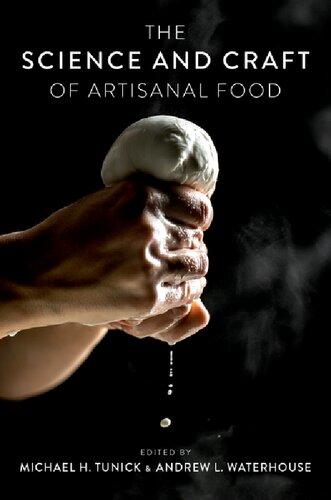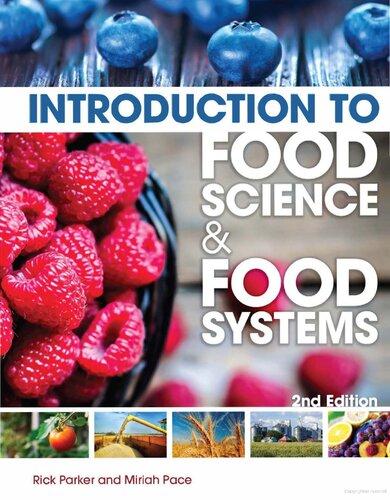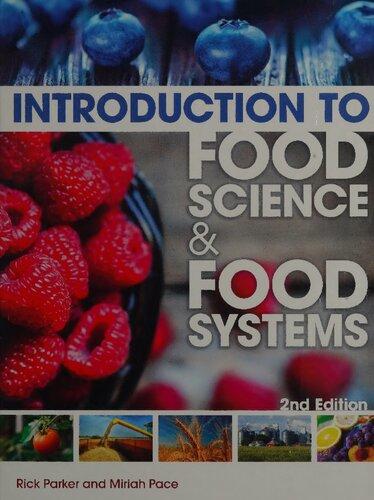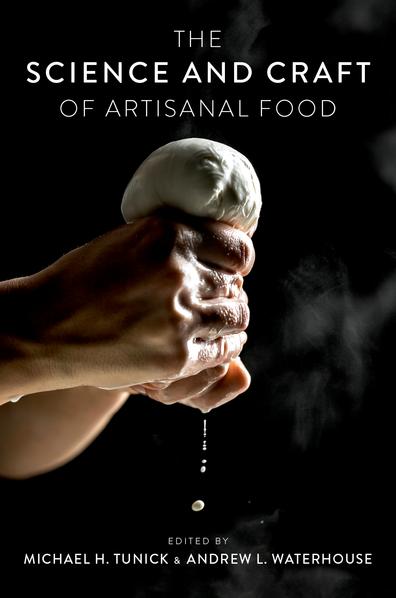INTRODUCTION
Marketing Artisanal Products
r icardo Villarreal
Tohelp provide a mental image that describes the environment for artisanal producers and their consumers, consider the following analogy: think of artisanal producers and artisanal consumers as two single people looking for true love based on commitment, understanding, trust, and long-term best interests, pragmaphiles. 1 Further, these two pragmaphiles live in a world with many single and married people who are simply looking for passion, lust, and pleasure (erophiles2). Both our pragmaphiles and erophiles use the word love, but pragmaphiles use it to truly express who they are and what they believe, while erophiles use it to for conquests only, with no understanding of what it really
1 Pragmaphile is the author’s contraction of the ancient Greek word for love based on commitment, understanding, and long-term best interests (pragma).
2 Erophile is the author’s contraction of the ancient Greek word for love based on passion, lust, and pleasure (eros).
Ricardo Villarreal, Introduction In: The Science and Craft of Artisanal Food. Edited by: Michael H. Tunick and Andrew L. Waterhouse, Oxford University Press. © Oxford University Press 2023. DOI: 10.1093/oso/9780190936587.003.0001
means to love another. How will two pragmaphiles find each other in such an environment? They will recognize each other by staying true to the definition of love in their hearts. In doing so, they will trust each other through their words, actions, and promises kept. Similarly, artisanal producers can find and keep artisanal consumers through what they say and how they communicate it (words); production processes, ingredients, and distribution methods (actions); and keeping true to the artisanal values (promises kept) that both believe in.
In a marketplace where any brand, artisanal or not, can label and advertise products as artisanal creates a great challenge for truly artisanal producers and consumers looking for such products. In this environment, the meaning of artisanal becomes highly diluted, if not empty. As a result, the word artisanal is problematic. It is problematic because there is no formal, legal definition. As a result, the marketplace is replete with products that claim to be artisanal or that have artisanal qualities. For the average consumer, this may cause great confusion. This issue is fundamental to the marketing environment in which artisans operate and consumers shop. Articulating what current artisanal producers do in such a marketplace is an important step toward defending their products and integrity. Unlike cognac and champagne, there is no formal, legal definition to protect artisanal producers and interested consumers. However, a key to success in this environment is to focus on the marketing mix (product, price, place, and promotion—the 4Ps) and other related consumer behavior concepts. Relying on these fundamental, tried-and-true concepts of marketing is analogous to artisans relying on traditional methods of production. That is, there is great value in remembering and following foundational concepts and procedures to achieve the intended outcome.
This chapter will provide a short background on the issue of the term artisanal and the problems that have arisen from it. This is followed by a review of the marketing mix and related concepts, with descriptions of how truly artisanal producers can leverage them to identify, attract, and keep consumers who are looking for truly artisanal products. The chapter will close with marketing suggestions for consideration.
Artisanal: What Does It Mean?
The first question is what is an artisan and what is artisanal? According to Merriam-Webster.com, the first recorded use of the noun artisan occurred in 1538 (https://www.merr iam-webster. com/time-traveler/1538?src=learn-more-timetraveler). The citation, unfortunately, does not provide the context of the recorded use. The provided definitions of artisan are as follows: “1: a worker who practices a trade or handicraft” and “2: a person or company that produces something (such as cheese or wine) in limited quantities often using traditional methods.” From artisan comes the adjective artisanal. According to the same source, artisanal first appeared in print in 1939, though the context is not given (https:// www.merr iam-webster.com/time-traveler/1939). The definitions provided are as follows: “1: of, relating to, or characteristic of an artisan” and “2: produced in limited quantities by an artisan through the use of traditional methods; creating a product in limited quantities by traditional methods.”
There are also definitions created by practitioners and organizations, with many definitions having elements of those found in a dictionary. A few examples are provided that identify important aspects of the term artisanal. In 2005, James Mellgren,
in Gourmet Retailer, provided the following definition of artisanal: “products that are made by hand, usually in small batches, usually adhering to age-old traditions, even though at times the products themselves can be innovative. Typically, these products reflect one producer’s vision.” In a 2013 dissertation, Dr. Jenifer Buckley provided a definition of artisanship as being of “small or medium scale, [emphasizing] manual techniques and close producer involvement, and [accommodating] variability in products and processes” (p. 58). The Center for Urban Education about Sustainable Agriculture (2006) defines artisanal as “a food product . . . made by a skilled craftsman, using high-quality ingredients and a mastered, often traditional technique.” Suzanne Cope (2013) adds that an artisanal product is “made in small batches and with ingredients that are sustainably sourced” (p. 4). A final definition comes from the Final Report of the International Symposium on Crafts and the International Market: Trade and Customs Codification (UNESCO and International Trade Centre, 1997):
Products that are produced by artisans, either completely by hand or with the help of hand-tools or even mechanical means, as long as the direct manual contribution of the artisan remains the most substantial component of the finished product. . . . The special nature of artisanal products derives from their distinctive features, which can be utilitarian, aesthetic, artistic, creative, culturally attached, decorative, functional, traditional, religiously and socially symbolic and significant. (p. 6)
The variation in the definitions suggests a lack of consensus and adoption of a single, formal, universally accepted definition. Without a formal definition, brands are free to create their own or to use existing ones as they see fit. Indeed, many national and global brands use some form of artisanal indiscriminately.
Would the creation of a universal, legal definition of artisanal solve the problem? Although the process of creating such a definition would undoubtedly be arduous, doing so could create a double-edged blade, providing benefits and restrictions for both producers and consumers. A benefit for producers, for example, is that it would identify, and separate, truly artisanal producers from those who currently use the term solely as a marketing ploy. This could be important as global brands, including McDonald’s (artisan grilled chicken), Domino’s Pizza (four types of artisan pizzas), and Dunkin’ Donuts (artisan bagels), have positioned some of their mass-produced products as artisanal. For consumers, a legal definition could help in their search for artisans and artisanal products. For example, consumers would be able to reduce the time they would spend distinguishing truly artisanal producers from those who are not. A negative outcome of a legal definition may be the implementation of restrictions that could be detrimental to producers. As Buckley (2013) noted, a standardized definition many require regulations, such as for food safety, that may well make survival difficult for artisanal producers. For example, Buckley (2013) conducted a study on cheese and jam artisans in Michigan and found that regulating food safety negatively influenced the artisanal production processes and added other burdensome restrictions. Such regulations increase the cost of doing business, which leads to price increases for consumers and a likely drop in demand. These findings suggest that protecting the term artisanal may help in one regard while creating negative outcomes in another.
Undoubtedly, the misuse of the term artisanal is a major problem for producers and consumers. How can small artisanal producers compete against national and global brands? A first step is for
artisanal producers to identify the variables they can’t control from those they can control. Clearly, artisanal producers can’t control the use of the term in the marketplace. Although this is a problem, artisanal producers have control over a very powerful set of marketing tools that can be used to position themselves in the minds of consumers. Presented below, these tools are used to execute marketing strategies relative to complexities in the artisanal goods marketplace. With the ability to control them, producers can differentiate their goods from those that are artisanal in name only. These fundamental tools give artisanal producers the power of David in the face of Goliath.
The Marketing Mix
The marketing mix refers to the tools that a company has the power to adjust to either take advantage of an opportunity or mitigate threats in the marketplace. The 4Ps stands for product, price, place (distribution), and promotion (marketing communications). Product refers to all the goods or services offered by a business. Price is the amount of money one must pay in exchange for a business entity’s product or service. Place refers to distribution. It includes all the methods by which and the locations where a consumer can purchase a company’s product or service. Promotion refers to a company’s use of communications to make consumers aware of their product or service and benefits. An important aspect of the 4Ps is to understand that collectively they help define, articulate, and reflect a brand’s positioning in the marketplace. As simple as these may be, they are the most important tools that brands use to execute marketing strategies.
Brand Positioning and the 4Ps
Brand positioning is an important concept closely related to the 4Ps. It is defined as “the act of designing the company offer and image so that it occupies a distinct and valued place in the minds of target customers” (Kotler and Armstrong, 2013). Brand positioning is implicitly relative to competing brands. That is, a brand can position itself as being part of a particular product category by identifying points of parity (e.g., Audi, BMW, and Mercedes all share German engineering and racing history). Additionally, brands may distance their products from a product category by identifying points of differentiation (e.g., Audi in terms of design as compared to BMW and Mercedes).
Kotler and Armstrong’s definition of positioning suggests two primary components, one product-related and the other consumer-related. The product component is related to a unique attribute or benefit that the product possesses. The second component refers to the brand image that resides in the minds of consumers (i.e., brand positioning). A product’s unique attribute or benefit is a brand’s way of telling consumers why their product is different (i.e., better) and explaining the benefit(s) of this difference. The second component relates to the positive thoughts and images about a brand that reside in the minds of the consumer. How does a consumer develop thoughts or images about a brand? It’s no accident. Positioning is the product of everything a brand does and communicates to consumers. Positioning begins to take hold when there is overlap between what a brand says a consumer will experience with their product and a consumer’s actual experience with the product. For example, let us say an artisanal brand positions itself as “an authentic, traditional
maker of product X.” Further, assume the benefit of this brand is the use of traditional methods of production and the quality of ingredients, resulting in a delicious product that, upon consuming, has a great emotional impact on the consumer. This fictitious positioning has implications for the 4Ps. For example, the product must be made of quality ingredients and have an amazing taste. The price, too, must reinforce this positioning. What would one expect to pay for a product made as described in the positioning? It would certainly cost more than a similar industrially created product. In terms of place (distribution), where would one expect to purchase such a quality product? Uniqueness of product implies a selective distribution approach, only sold in a limited number of exclusive locations as opposed to an intensive distribution (being sold in all mass market locations). If consumers can purchase “product X” at the production facility, what visual, auditory, and sensory experiences does the positioning suggest a consumer would have? Finally, in terms of promotion, all communications, regardless of medium and goal, must reflect the brand’s actual and image- based aspects alluded to in the positioning. It is crucial to note, however, that what is important or unique from the brand’s perspective must also be important or unique from the consumer’s perspective. In other words, if consumers do not believe that a brand’s benefit or uniqueness is important, then the brand has no real chance of convincing consumers to try the product.
Consumer Behavior
The consumer behavior process (CBP) is conceptualized as a series of steps that consumers go through on their purchase journey.
The first step of the CBP is need recognition. In this step a consumer first determines there is a difference between their desired state and their actual state. In other words, a consumer believes they are experiencing a consumption-based need that a brand might be able to satisfy. The second step is information search. In this step, the consumer must determine which brand or brands might have the best product or service to satisfy their consumption need. To do this, consumers may use one or both search options available to them: internal search or external search. Internal search is where a consumer scans their mental memory banks for prior experience with the current need or a situation similar to the current need. This search provides relevant information on how to solve their current consumption problem. External search includes, but is not limited to, personal sources (family, friends, neighbors, acquaintances), commercial sources (advertising, salespeople, brand websites, packaging, displays), and experiential sources (handling, examining, using the product) (Kotler and Armstrong, 2014).
Regardless of whether internal, external, or both searches are used, consumers now have a list of brands they believe may address their consumption need. The third step is the evaluation of alternatives. After a consumer determines a list of alternative offerings, they must then evaluate the brands in their list of viable alternatives. The penultimate step is the purchase decision. After evaluating their brand list, the consumer then makes a purchase from the brand they feel will best address their issue. Finally, the CBP ends with the post-purchase behavior/evaluation, where the consumer determines if the selected brand met their expectations or not.
Brand awareness is an important component of the CBP’s internal search step. Brand awareness is simply what the term
implies: Are consumers aware of a given brand? If consumers are unaware of a brand, there is no chance the brand will come up in a consumer’s internal search. In other words, a consumer cannot consider an unknown brand for purchase. In such a case, a brand with low awareness can only hope that an external search brings their name up for a consumer’s consideration.
The CBP outlines the major steps that consumers go through when making a consumption decision. It is important to note that the process can be circumvented. Branding allows consumers the ability to circumvent the CBP as brand image and product experience can act as a shortcut through these steps. That is, a positive experience with a product creates a positive memory that can take a consumer from need recognition directly to product purchase.
The CBP is useful in explaining the steps a consumer may follow in finding a product that meets their consumption need. However, it does not provide any information as to why consumers buy what they do. Understanding the reason(s) consumers make the purchases they do is just as important for brands.
Motivation
Motivation is the concept that helps marketers understand why consumers buy what they do. This understanding is integral to determining the consumer needs a product can meet or if a product can be repositioned to meet other needs. Although there are many needs that impact consumer behavior in general and motivation in particular, the following may be more pertinent for artisanal consumers and those consumers who may be persuaded to
consider artisanal goods. The two components are relationship with a product and consumer needs.
r elationship with a p roduct
For artisanal producers, the most relevant concepts related to a consumer’s relationship with a product are self-concept, love, and interdependence. Self-concept suggests that consumers use products that help them define, reinforce, and express to others their sense of identity. For example, artisanal products allow consumers to reinforce their self-image, convey meaning to others about the way the consumer sees themselves, and tell others how they want to be seen. A brand that allows consumers to meet these motivational needs helps create an emotional bond between the consumer, the product, and the brand. The consumer’s affective response is the heart of the “love” component of a consumer’s relationship with a product. When consumers find a product and brand that allows them to meet their consumption needs and their self-concept, the product becomes integral to their daily routine. This relationship becomes integral to the concept of brand loyalty.
c onsumer n eeds
The need for affiliation and that for power are components of the “consumer needs”–based reasons that consumers buy what they do. Arguably, these needs have some conceptual connection to those of the “relationship with a product” aspect of consumer behavior. The difference, however, may be more psychologically grounded. For example, the need for affiliation suggests that consumers purchase products primarily to identify themselves as members of a particular group regardless of other product-related
variables such as price or travel time to purchase. This suggests that practical product benefits may be less important than the identity aspect of using the product. For example, a consumer with a great affinity for local artisans and their products is willing to pay more for products and travel farther rather than purchasing an internationally sourced, fair trade, artisan product. The second consumer need, the need for power, has to do with one’s desire to control one’s environment. The key here is the “desire” to control, suggesting that the purchase of artisanal products may make consumers feel they are doing their best to manage their local environment. This could include purchasing from local artisans, who are part of the local environment and who use locally sourced ingredients.
Cleary, consumers’ purchase behavior suggests that consumption is more than meeting a need; it is making a statement. And the extent to which a brand helps consumers define and express themselves suggests how a brand might fit into a consumer’s life beyond simply meeting a need.
Segmentation, Targeting, and Positioning
Segmentation, targeting, and positioning (STP) are other fundamental marketing tools. These three tools are interrelated and suggest an ordered process. Segmentation starts with taking an entire market and segmenting it. The next step is to select one or more viable segments to target. The final step is to position the product within the viable target segment(s). As Kotler and Armstrong (2014) state, “[t]here is no single way to segment a market. A marketer has to try different segmentation variables,
alone and in combination, to find the best way to view market structure” (p. 193).
As noted above, there are many variables that can be used to segment a market. The major variables, however, include geographic, demographic, psychographic, and behavioral segmentation. Of these variables, psychographic may be considered the most relevant for artisanal products. Psychographics is a concept that is comprised of multiple, higher-level concepts, each of which is defined by multiple variables. The higher-level concepts include social class, lifestyle, and personality characteristics. Social class is usually a concept defined by education level and income level; lifestyle is typically defined as the activities, interests, and opinions that define how one lives. The usefulness of psychographics is that it suggests that consumers with similarities on one or more of these variables may have similar responses to a brand’s use of the 4Ps.
Once segments are determined, the next step is to assess their relative viability. That is, is a segment realistically viable? To help answer this important question, marketers collect the data needed to answer the five requirements for effective segmentation: measurable, accessible, substantial, differentiable, and actionable. Measurable means that a marketer must be able to measure the size of the segment and the segment’s purchasing power. Accessible means that a segment can be reached in terms of distribution and communications. So, one must know not only how many are in a segment and what their purchasing power is but also where they live geographically and which media they use for communications. Substantial suggests that the segment is large enough or profitable enough to warrant targeting. In other words,
are there enough consumers in the segment, and do they have the purchasing power to warrant targeting? Differentiable suggests that when multiple segments are identified, each segment must behave differently from every other with changes in the marketing mix. In other words, multiple segments should not equally respond to a single marketing mix because if they do, then they are not actually different segments. Actionable suggests that a brand has the ability and resources to effectively attract and serve a segment or multiple segments.
Targeting
Once a segment(s) passes the viability criteria, brands can focus on targeting. There are three major targeting strategies: undifferentiated, differentiated, and concentrated. Undifferentiated targeting is essentially mass marketing. This strategy implies that no real segmentation of a market has been done or that the identified segments did not meet the criteria for effective segmentation. This type of targeting suggests that a product can meet all needs for all consumers using a single marketing mix. Differentiated targeting suggests that a brand has identified multiple segments that meet the criteria for effective segmentation and decided to create unique marketing mixes for each segment. In this case, at least one of the 4Ps is different between each segment, and each segment has a unique reaction to the marketing mix. Concentrated targeting is the selection of only one of multiple, viable segments. For example, of three viable segments, a brand will target the one that it feels can most successfully meet the needs of consumers at a profit.
Positioning
Positioning in this context relates to a product and not the umbrella brand that makes the product. For example, an Audi Q5 has its own product-specific positioning of sport, luxury utility, while at the same time reflecting and reinforcing Audi’s umbrella brand positioning of luxury, style, and technology. In the context of segmentation and targeting, positioning is related to the specific and unique product attributes that consumers hold in their minds in relation to competing products. An obvious question is, how do consumers create an image of a brand? Brand image is built and reinforced through the 4Ps and positioning. It is no accident what a consumer thinks about a brand as the brand image and positioning are reflected and reinforced in the product, price, place, and promotion of a brand’s product.
Integrated Marketing Communications
Marketing communications is an important aspect of STP. Integrated marketing communications (IMC) is defined as the “coordination of the promotional mix elements . . . with each other and with the other elements of a brands’ marketing mixes . . . such that all elements speak with one voice” (Shimp & Andrews, 2013, p. 4). IMC should happen at both the brand level and the product level. In addition, all product-level communications should reinforce the overall brand positioning. One of the fundamental reasons that a brand should speak with a single voice across all media is to reinforce the brand messaging and image. Any inconsistencies in messaging may lead to consumer confusion.
As noted earlier, positioning resides in the minds of consumers. Consumers develop their ideas about a brand through word of mouth, which a brand cannot directly manage; marketing communications; and experience with the brand. Although a brand cannot directly manage word of mouth, managing marketing communications and brand experience provides an indirect way to impact word of mouth.
It is also important to note that consistency in messaging does not only relate to explicit words use in media communications. That is, all formal communication messages about an artisanal product may lead to expectations regarding the actual product. This is important for artisanal producers to note as many artisanal products are highly sensory in nature (touch, sight, sound, smell, and taste). In terms of positioning and messaging, these senses may be just as important as the actual message in terms of brand image and positioning. It’s important that a brand ensures that it can meet any expectations consumers may create because of exposure to its messaging.











